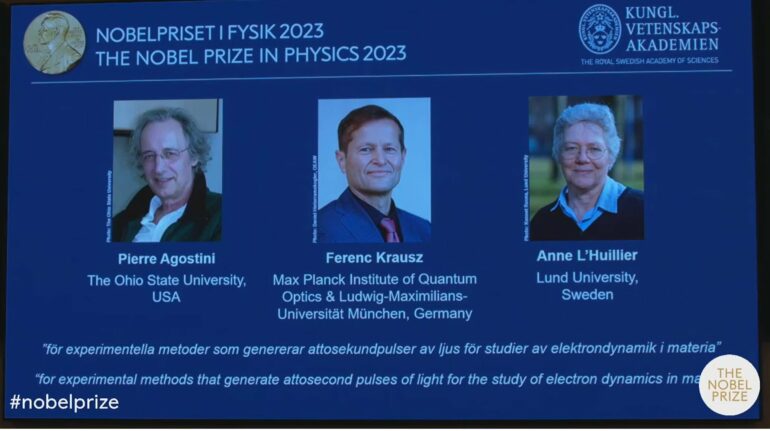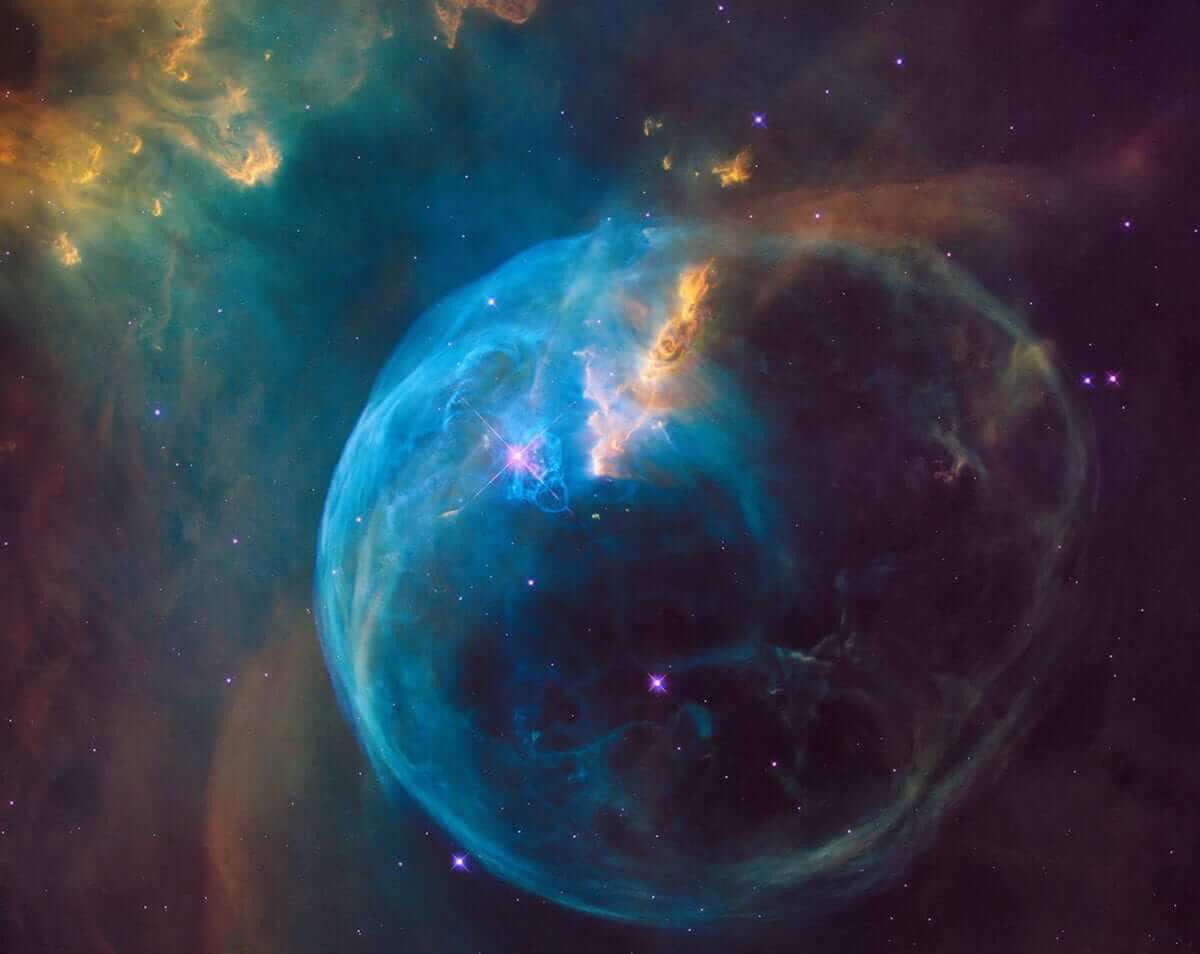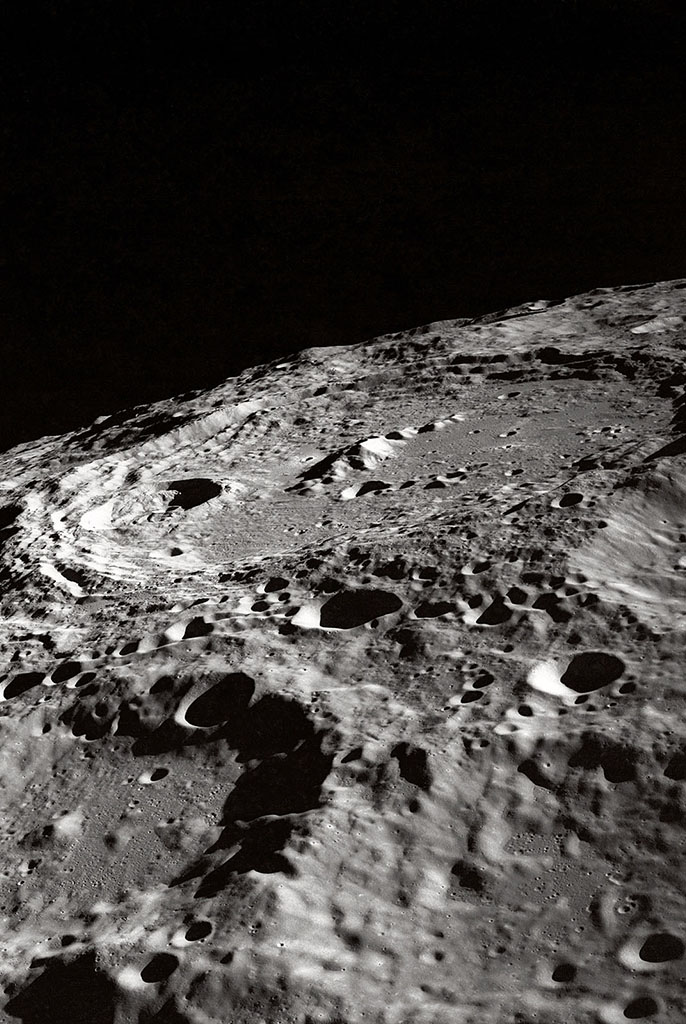The Nobel Prize in physics was awarded Tuesday to three scientists who look at electrons in atoms during the tiniest of split seconds.
Pierre Agostini of The Ohio State University in the U.S.; Ferenc Krausz of the Max Planck Institute of Quantum Optics and Ludwig Maximilian University of Munich in Germany; and Anne L’Huillier of Lund University in Sweden won the award.
Their experiments “have given humanity new tools for exploring the world of electrons inside atoms and molecules,” according to the Royal Swedish Academy of Sciences, which announced the prize in Stockholm. They “have demonstrated a way to create extremely short pulses of light that can be used to measure the rapid processes in which electrons move or change energy.”
At the moment, this science is about understanding our universe rather than practical applications, but the hope is that it will eventually lead to better electronics and disease diagnosis.
L’Huillier, who is only the fifth woman to receive a Nobel in physics, said she was teaching when she got the call that she had won. She joked that it was hard to finish the lesson.
“This is the most prestigious and I am so happy to get this prize. It’s incredible,” she told the news conference announcing the prize. “As you know there are not so many women who got this prize so it’s very special.”
The Nobel Prizes carry a cash award of 11 million Swedish kronor ($1 million). The money comes from a bequest left by the prize’s creator, Swedish inventor Alfred Nobel, who died in 1896.
Last year, three scientists jointly won the physics prize for proving that tiny particles could retain a connection with each other even when separated. The phenomenon was once doubted but is now being explored for potential real-world applications such as encrypting information.
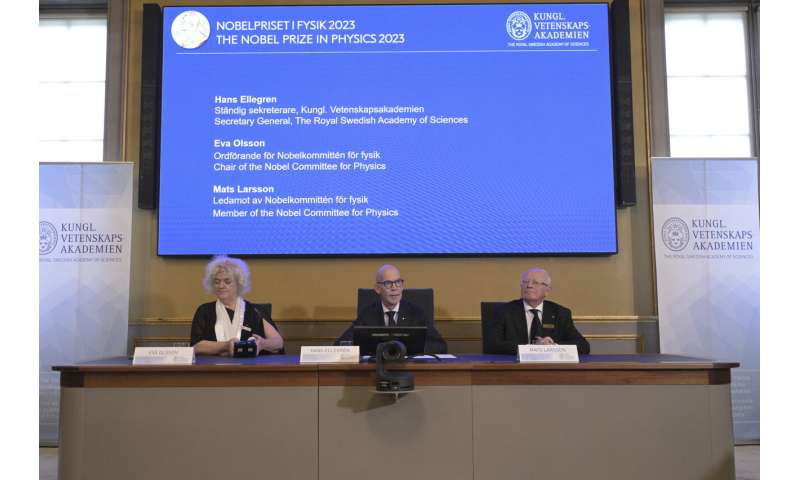
Permanent Secretary of the Royal Academy of Sciences, Hans Ellegren, center, together with members Eva Olsson, right, and Mats Larsson, announces the winner of the 2023 Nobel Prize in Physics, at the Royal Academy of Sciences, in Stockholm, Tuesday, Oct. 3, 2023. The Nobel Prize in physics has been awarded to Pierre Agostini, Ferenc Krausz and Anne L’Huillier for looking at electrons in atoms by the tiniest of split seconds. © Anders Wiklund/TT News Agency via AP
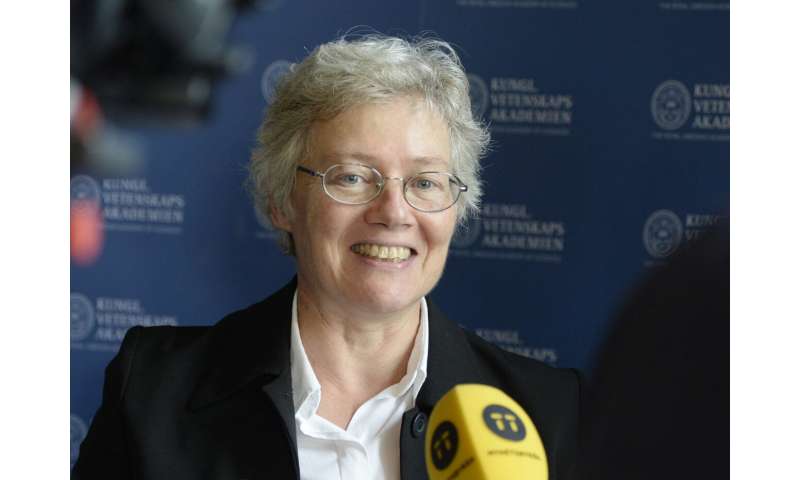
Physicist Anne L’Huillier speaks in this Oct. 8, 2014 photo. The Nobel Prize in physics has been awarded on Tuesday, Oct. 3, 2023 to Pierre Agostini, Ferenc Krausz and Anne L’Huillier for looking at electrons in atoms by the tiniest of split seconds. © Bertil Ericson/TT News Agency via AP, File
The physics prize comes a day after Hungarian-American Katalin Karikó and American Drew Weissman won the Nobel Prize in medicine for discoveries that enabled the creation of mRNA vaccines against COVID-19.
Nobel announcements will continue with the chemistry prize on Wednesday and the literature prize on Thursday. The Nobel Peace Prize will be announced on Friday and the economics award on Oct. 9.
The laureates are invited to receive their awards at ceremonies on Dec. 10, the anniversary of Nobel’s death. The prestigious peace prize is handed out in Oslo, according to his wishes, while the other award ceremony is held in Stockholm.
The Nobel committee announcement:
The Royal Swedish Academy of Sciences has decided to award the Nobel Prize in Physics 2023 to
Pierre Agostini
The Ohio State University, Columbus, U.S.
Ferenc Krausz
Max Planck Institute of Quantum Optics, Garching and Ludwig-Maximilians-Universität München, Germany
Anne L’Huillier
Lund University, Sweden
“for experimental methods that generate attosecond pulses of light for the study of electron dynamics in matter”
Experiments with light capture the shortest of moments
The three Nobel Laureates in Physics 2023 are being recognised for their experiments, which have given humanity new tools for exploring the world of electrons inside atoms and molecules. Pierre Agostini, Ferenc Krausz and Anne L’Huillier have demonstrated a way to create extremely short pulses of light that can be used to measure the rapid processes in which electrons move or change energy.
Fast-moving events flow into each other when perceived by humans, just like a film that consists of still images is perceived as continual movement. If we want to investigate really brief events, we need special technology. In the world of electrons, changes occur in a few tenths of an attosecond—an attosecond is so short that there are as many in one second as there have been seconds since the birth of the universe.
The laureates’ experiments have produced pulses of light so short that they are measured in attoseconds, thus demonstrating that these pulses can be used to provide images of processes inside atoms and molecules.
In 1987, Anne L’Huillier discovered that many different overtones of light arose when she transmitted infrared laser light through a noble gas. Each overtone is a light wave with a given number of cycles for each cycle in the laser light. They are caused by the laser light interacting with atoms in the gas; it gives some electrons extra energy that is then emitted as light. Anne L’Huillier has continued to explore this phenomenon, laying the ground for subsequent breakthroughs.
In 2001, Pierre Agostini succeeded in producing and investigating a series of consecutive light pulses, in which each pulse lasted just 250 attoseconds. At the same time, Ferenc Krausz was working with another type of experiment, one that made it possible to isolate a single light pulse that lasted 650 attoseconds.
The laureates’ contributions have enabled the investigation of processes that are so rapid they were previously impossible to follow.
“We can now open the door to the world of electrons. Attosecond physics gives us the opportunity to understand mechanisms that are governed by electrons. The next step will be utilising them,” says Eva Olsson, Chair of the Nobel Committee for Physics.
There are potential applications in many different areas. In electronics, for example, it is important to understand and control how electrons behave in a material. Attosecond pulses can also be used to identify different molecules, such as in medical diagnostics.
Electrons in pulses of light
Through their experiments, this year’s laureates have created fashes of light that are short enough to take snapshots of electrons’ extremely rapid movements. Anne L’Huillier discovered a new effect from laser light’s interaction with atoms in a gas. Pierre Agostini and Ferenc Krausz demonstrated that this effect can be used to create shorter pulses of light than were previously possible.
A tiny hummingbird can beat its wings 80 times per second. We are only able to perceive this as a whirring sound and blurred movement. For the human senses, rapid movements blur together, and extremely short events are impossible to observe. We need to use technological tricks to capture or depict these very brief instants.
High-speed photography and strobe lighting make it possible to capture detailed images of feeting phenomena. A highly focused photograph of a hummingbird in fight requires an exposure time that is much shorter than a single wingbeat.
The faster the event, the faster the picture needs to be taken if it is to capture the instant.
The same principle applies to all the methods used to measure or depict rapid processes; any measurement must be done more quickly than the time it takes for the system being studied to undergo a noticeable change, otherwise the result is vague. This year’s laureates have conducted experiments that demonstrate a method for producing pulses of light that are brief enough to capture images of processes inside atoms and molecules.
Atoms’ natural time scale is incredibly short. In a molecule, atoms can move and turn in millionths of a billionth of a second, femtoseconds. These movements can be studied with the very shortest pulses that can be produced with a laser—but when entire atoms move the timescale is determined by their large and heavy nuclei, which are extremely slow compared to light and nimble electrons.
When electrons move inside atoms or molecules, they do it so quickly that changes are blurred out in a femtosecond. In the world of electrons, positions and energies change at speeds of between one and a few hundred attoseconds, where an attosecond is one billionth of a billionth of a second.
An attosecond is so short that that the number of them in one second is the same as the number of seconds that have elapsed since the universe came into existence, 13.8 billion years ago. On a more relatable scale, we can imagine a fash of light being sent from one end of a room to the opposite wall—this takes ten billion attoseconds.
A femtosecond was long regarded as the limit for the fashes of light it was possible to produce.
Improving existing technology was not enough to see processes occurring on the amazingly brief timescales of electrons; something entirely new was required. This year’s laureates conducted experiments that opened up the new research feld of attosecond physics.
Shorter pulses with the help of high overtones
Light consists of waves—vibrations in electrical and magnetic felds—that move through a vacuum faster than anything else. These have diferent wavelengths, equivalent to diferent colours. For example, red light has a wavelength of about 700 nanometres, one hundredth the width of a hair, and it cycles at about four hundred and thirty thousand billion times per second. We can think of the shortest possible pulse of light as the length of a single period in the light wave, the cycle where it swings up to a peak, down to a trough, and back to its starting point. In this case, the wavelengths used in ordinary laser systems are never able to get below a femtosecond, so in the 1980s this was regarded as a hard limit for the shortest possible bursts of light.
The mathematics that describes waves demonstrates that any wave form can be built if enough waves of the right sizes, wavelengths and amplitudes (distances between peaks and troughs) are used. The trick to attosecond pulses is that it is possible to make shorter pulses by combining more and shorter wavelengths.
Observing electrons’ movements on an atomic scale requires short-enough pulses of light, which means combining short waves of many diferent wavelengths.
To add new wavelengths to light, more than just a laser is necessary; the key to accessing the briefest instant ever studied is a phenomenon that arises when laser light passes through a gas. The light interacts with its atoms and causes overtones—waves that complete a number of entire cycles for each cycle in the original wave. We can compare this to the overtones that give a sound its particular character, allowing us to hear the diference between the same note played on a guitar and a piano.
In 1987, Anne L’Huillier and her colleagues at a French laboratory were able to produce and demonstrate overtones using an infrared laser beam that was transmitted through a noble gas. The infrared light
caused more and stronger overtones than the laser with shorter wavelengths that had been used in previous experiments. In this experiment, many overtones of about the same light intensity were observed.
In a series of articles, L’Huillier continued to explore this efect during the 1990s, including at her new base, Lund University. Her results contributed to the theoretical understanding of this phenomenon, laying the foundation of the next experimental breakthrough.
Escaping electrons create overtones
When the laser light enters the gas and afects its atoms, it causes electromagnetic vibrations that distort the electric feld holding the electrons around the atomic nucleus. The electrons can then escape from the atoms. However, the light’s electrical feld vibrates continuously and, when it changes direction, a loose electron may rush back to its atom’s nucleus. During the electron’s excursion it collected lots of extra energy from the laser light’s electrical feld and, to reattach to the nucleus, it must release its excess energy as a pulse of light. These light pulses from the electrons are what create the overtones that appear in the experiments.
Light’s energy is associated with its wavelength. The energy in the emitted overtones is equivalent to ultraviolet light, which has shorter wavelengths than the light visible to the human eye. Because the energy comes from the laser light’s vibrations, the overtones’ vibration will be elegantly proportional to the wavelength of the original laser pulse. The result of the light’s interaction with many diferent atoms is diferent light waves with a set of specifc wavelengths.
Once these overtones exist, they interact with each other. The light becomes more intense when the lightwaves’ peaks coincide, but becomes less intense when the peak in one cycle coincides with the trough of another. In the right circumstances, the overtones coincide so that a series of pulses of ultraviolet light occur, where each pulse is a few hundred attoseconds long. Physicists understood the theory behind this in the 1990s, but the breakthrough in actually identifying and testing the pulses occurred in 2001.
Pierre Agostini and his research group in France succeeded in producing and investigating a series of consecutive light pulses, like a train with carriages. They used a special trick, putting the “pulse train” together with a delayed part of the original laser pulse, to see how the overtones were in phase with each other. This procedure also gave them a measurement for the duration of the pulses in the train, and they could see that each pulse lasted just 250 attoseconds.
At the same time, Ferenc Krausz and his research group in Austria were working on a technique that could select a single pulse—like a carriage being uncoupled from a train and switched to another track. The pulse they succeeded in isolating lasted 650 attoseconds and the group used it to track and study a process in which electrons were pulled away from their atoms.
These experiments demonstrated that attosecond pulses could be observed and measured, and that they could also be used in new experiments.
Now that the attosecond world has become accessible, these short bursts of light can be used to study the movements of electrons. It is now possible to produce pulses down to just a few dozen attoseconds, and this technology is developing all the time.
Electrons’ movements have become accessible
Attosecond pulses make it possible to measure the time it takes for an electron to be tugged away from an atom, and to examine how the time this takes depends on how tightly the electron is bound to the atom’s nucleus. It is possible to reconstruct how the distribution of electrons oscillates from side to side or place to place in molecules and materials; previously their position could only be measured as an average.
Attosecond pulses can be used to test the internal processes of matter, and to identify diferent events. These pulses have been used to explore the detailed physics of atoms and molecules, and they have potential applications in areas from electronics to medicine.
For example, attosecond pulses can be used to push molecules, which emit a measurable signal. The signal from the molecules has a special structure, a type of fngerprint that reveals what molecule it is, and the possible applications of this include medical diagnostics.
More information:
Advanced information: www.nobelprize.org/uploads/202 … physicsprize2023.pdf
2023 The Associated Press. All rights reserved. This material may not be published, broadcast, rewritten or redistributed without permission.
Citation:
Three scientists win Nobel Prize in physics for work on electrons in atoms during split seconds (2023, October 3)
